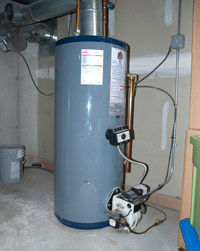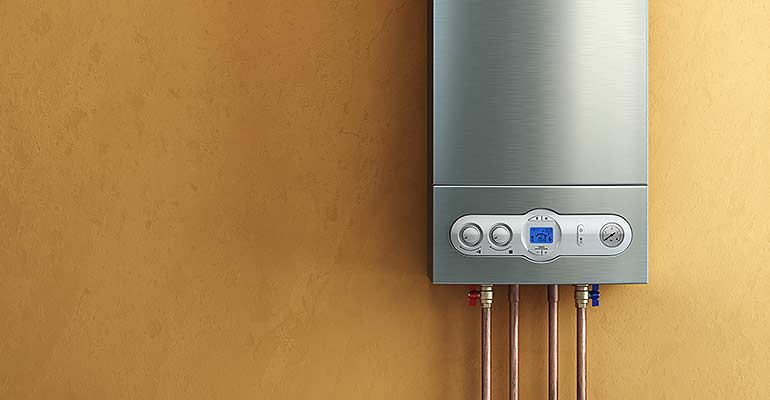Making Sure Longevity of Your Home's Hot Water System: Care Advice
Making Sure Longevity of Your Home's Hot Water System: Care Advice
Blog Article
Just how do you feel when it comes to Tips For Maintaining Your Hot Water Heater?

Hot water is crucial for everyday comfort, whether it's for a revitalizing shower or cleaning meals. To ensure your warm water system runs effectively and lasts longer, regular upkeep is key. This article offers useful suggestions and insights on how to preserve your home's warm water system to prevent disturbances and costly repair services.
Introduction
Preserving your home's hot water system might appear daunting, yet with a couple of simple actions, you can ensure it operates efficiently for years to come. This guide covers everything from recognizing your warm water system to DIY maintenance tips and understanding when to call professional aid.
Relevance of Maintaining Your Hot Water System
Routine upkeep not only extends the life expectancy of your hot water system however also guarantees it operates effectively. Neglecting maintenance can result in reduced effectiveness, higher power costs, and also premature failure of the system.
Indicators Your Warm Water System Needs Maintenance
Understanding when your warm water system needs focus can prevent major problems. Watch out for indicators such as irregular water temperature level, strange noises from the heater, or rustic water.
Comprehending Your Hot Water System
Before diving into maintenance tasks, it's practical to comprehend the standard parts of your warm water system. Typically, this includes the water heater itself, pipes, anode rods, and temperature controls.
Monthly Upkeep Tasks
Normal month-to-month checks can aid capture small concerns prior to they intensify.
Purging the Hot Water Heater
Purging your hot water heater removes debris build-up, boosting performance and lengthening its life.
Monitoring and Replacing Anode Rods
Anode rods avoid corrosion inside the storage tank. Examining and replacing them when worn out is important.
Inspecting and Readjusting Temperature Level Settings
Adjusting the temperature setups makes certain ideal performance and safety.
Do It Yourself Tips for Maintenance
You can carry out several upkeep jobs on your own to keep your hot water system in top problem.
Looking for Leakages
Consistently check pipelines and connections for leaks, as these can bring about water damages and higher expenses.
Checking Pressure Relief Valves
Examining the stress relief valve ensures it operates properly and stops extreme pressure build-up.
Protecting Pipes
Shielding warm water pipes reduces warmth loss and can save energy.
When to Call a Specialist
While DIY upkeep is useful, some problems need specialist experience.
Complex Concerns Needing Professional Help
Examples include significant leaks, electrical issues, or if your water heater is consistently underperforming.
Regular Professional Upkeep Advantages
Professional upkeep can include detailed assessments, tune-ups, and making certain compliance with safety and security criteria.
Final thought
Regular upkeep of your home's hot water system is crucial for effectiveness, long life, and expense financial savings. By complying with these pointers and understanding when to look for professional assistance, you can make certain a dependable supply of warm water without unexpected interruptions.
How to Maintain an Instant Hot Water Heater
Before tinkering with your hot water heater, make sure that it’s not powered on. You also have to turn off the main circuit breaker and shut off the main gas line to prevent accidents. Also turn off the water valves connected to your unit to prevent water from flowing into and out of the appliance. 2. When you’re done, you have to detach the purge valves’ caps. These look like the letter “T†and are situated on either side of the water valves. Doing so will release any pressure that has accumulated inside the valves while at the same time avoid hot water from shooting out and burning your skin. 3. When the purge valves’ caps are removed, you have to connect your hosing lines to the valves. Your unit should have come with three hoses but if it didn’t, you can purchase these things from any hardware or home repair shops. You can also get them from retail stores that sell water heating systems. Read the user’s manual and follow it to complete this task properly. When the hosing lines are connected, open the purge port’s valves. 4. You should never use harsh chemical cleaners or solutions when cleaning your unit. Make use of white vinegar instead. It should be undiluted and you’ll probably use about 2 gallons. 5. Now flush your water heater. This task should probably take about 40 minutes. We can’t give you specific directions for this because the procedure is carried out depending on the type, model and brand of your heater. With that being said, refer to the user’s manual. 6. When you’re done draining the unit, you have to turn off the purge port valves again. Remove the hosing lines that you earlier installed on each of the water valves. Put the valve caps (purge port) back in their respective places and be very careful so as not to damage the rubber discs that are found inside these caps. 7. Now that everything’s back in place, check your user’s manual again to find out how to reactivate your water heating system. 8. Once it is working, turn one of your hot water faucets on just to let air pass through the heater’s water supply pipes. Leave the tap on until water flows smoothly out of it. https://www.orrplumbing.com/blog/2014/september/how-to-maintain-an-instant-hot-water-heater/

Do you appreciate reading about Tips on Maintaining a Water Heater? Place a short review below. We will be glad to hear your views about this review. Hoping to see you back again before long. Are you aware of someone else who is inquisitive about the subject? Feel free to promote it. I take joy in your readership.
Request Estimate Report this page